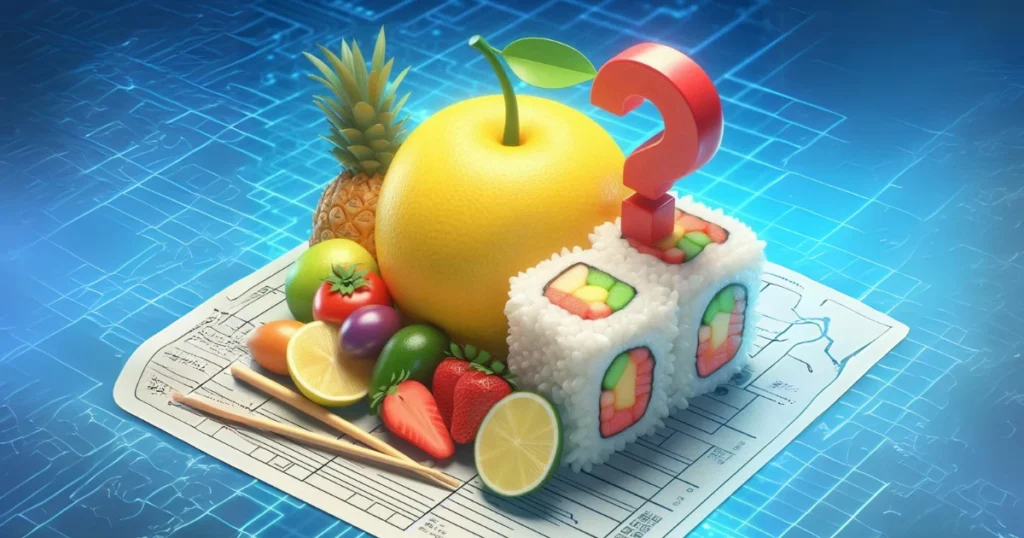
Sushi is a famous Japanese dish made of vinegared rice that is shaped, filled, or topped with different sauces and ingredients.
Wheat, rye, barley, and triticale all have gluten in them. People who don’t eat gluten might be curious about whether they can eat sushi.
Rice, fish, seaweed, and vegetables are common gluten-free ingredients in sushi.
Although there are many types of sushi, gluten-free people should avoid some.
It tells you which sushi items are gluten-free and which ones you should stay away from. It also gives you tips on how to make gluten-free sushi.
Toppers and products that are gluten-free
Most kinds of sushi have rice as one of their main ingredients. You can also use brown rice, but most often, we use medium- or short-grain white rice.
Sushi rice consists of water, rice vinegar, sugar, and salt. While most of these items are gluten-free, some types of vinegar, like non-distilled or malt vinegar, do contain gluten. It’s best to check the list of chemicals again before you eat.
In addition to these, there are numerous other gluten-free sushi toppings, dressings, and sauces available.
- Seaweed or nori: You can wrap the sushi rice in seaweed, also known as nori.
- Seafood and fish: We often place thick slices of raw fish on top of sushi rice or use them as a filling. People also use cooked or smoked fish, crab, shrimp, and other seafood.
- Cooked eggs and meats: Certain types of sushi may incorporate chicken, beef, pork, or eggs. Exercise caution when consuming sauces such as teriyaki, despite their lack of gluten.
- Fruits and veggies: All fruits and vegetables are naturally gluten-free, like avocado, cucumber, carrot, and green onions.
- Tofu: Most plain tofu is gluten-free, but added flavors or other items may not be. It’s best to check the label or call the place ahead of time.
- Gluten-free soy sauce: Only use tamari or soy sauce that says on the package that it is gluten-free.
- Cream cheese: Sometimes, people mix cream cheese with crab or other foods for the filling.
- Mayonnaise: Mayonnaise should be gluten-free when made from scratch. Some ready-made versions may have ingredients that contain gluten.
- Masago/Tobiko: The small, bright orange roe (fish eggs) that decorate sushi are gluten-free if you don’t use regular soy sauce. Before you eat, check.
- Wasabi: Wasabi can be made into a paste, used in sushi, or served as a side dish. It is also known as Japanese horseradish. Pure wasabi does not contain gluten.
- Imitation wasabi: To mimic the real thing, horseradish, mustard flour, cornflour, and green food colouring are the main ingredients in most wasabi on the market. Read the label carefully to identify any additional gluten-containing ingredients.
- Pickled ginger: The ingredients for this pickled ginger are ginger, vinegar, sugar, and salt. It cleans the tongue.
Is Sushi Gluten-Free?
The answer isn’t straightforward. While many of the core ingredients in sushi are naturally gluten-free, some additions and preparations can introduce gluten into the dish.
What ingredients and toppings should you avoid when following a gluten-free diet?
Wheat, rye, barley, and triticale all contain gluten as a protein. Any food that contains or comes into contact with these grains will contain gluten.
Sushi uses several ingredients including gluten:
- Imitation crab: Imitation crab refers to a type of fish that undergoes mashing and shaping into a paste. It usually contains wheat starch, which means it also contains gluten.
- Tempura: Some sushi features battered and fried fish or vegetables. This is called tempura. This recipe typically uses gluten-containing wheat flour.
- Breadcrumbs: Certain foods, such as shrimp, may undergo breading and frying, rendering them incompatible with a gluten-free diet.
- Soy sauce: Usually made with wheat, this sauce also goes by the name “soy sauce.” However, some varieties do not contain gluten.
- Other sauces: ike tamarind sauce, eel sauce, BBQ sauce, and Ponzu sauce, either use soy sauce as their base or might contain gluten from other sources. It’s best to read the label or call the place ahead of time.
How to make sushi without gluten
In a number of ways, you can make sure your sushi is gluten-free.
- Choose freshly made sushi: Fresh sushi allows you to express your preferences to the chef. Avoid eating store-bought sushi, as it may contain gluten-containing salt or sugar. Additionally, it can be challenging to discern the manufacturing process.
- Make a swap: Request that gluten-containing food items be replaced with safe ones. For instance, switch fake crab for avocado.
- Keep it simple: It might be easier to see what’s in sushi rolls with only one or two fillings than rolls with a lot of different vegetables and sauces.
- Call ahead: You can call the restaurant ahead of time to see if they have gluten-free choices and if they follow safe food preparation methods to keep gluten from getting into other foods.
- Avoid cross-contamination: Make the gluten-free sushi in a clean area, away from gluten-containing items like breadcrumbs and flour.
- Bring your own soy sauce: You may want to bring your own soy sauce to a restaurant or buy ready-made sushi to ensure the soy sauce is gluten-free.
- Make your own sushi: If you want to be sure that your sushi is gluten-free, make it yourself.
The bottom line
People who can’t have gluten, like those with celiac disease, can still enjoy many kinds of sushi.
However, some ingredients and sauces, such as regular soy sauce, imitation crab, tempura, breadcrumbs, and a variety of other sauces, are not compatible.
Therefore, understanding the ingredients used is crucial if you need to avoid gluten for health reasons. Make sushi at home or find something safer if you’re unsure.
Fortunately, you can substitute better products for most gluten-containing ones or avoid them altogether.


